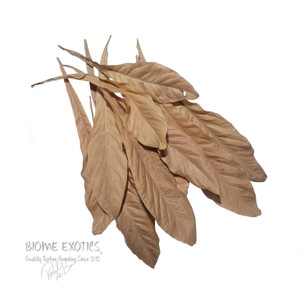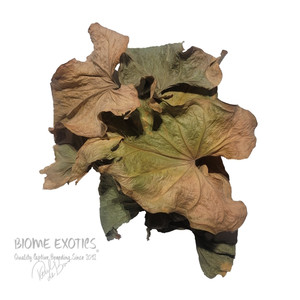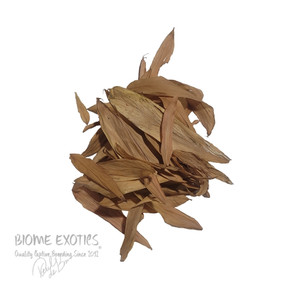
Dried Split Leaf Philodendron Leaves (Philodendron Selloum) – 20g
BIOME EXOTICS LLCThe Unusual Properties and Benefits of Leaf-litter
As well as providing a natural source of food for living plants and organisms, dried leaves contain tannins and humic acids, which leach into the soil when it rains. Tannins are what give blackwater rivers and streams their characteristic tea-color appearance and low pH value. Selective leaf litter can also provide additional benefits, including anti-bacterial and anti-fungal properties, all of which support your substrate health. All the leaf litter Biome Exotics offers have been specifically selected to have these enhanced properties. Other leaves can be mixed in to increase the organic matter when preparing your substrate mixture.
SPLIT LEAF PHILODENDRON (PHILODENDRON SELLOUM) LEAF PROPERTIES:
- Substrate enrichment: Shredded or crumpled P. selloum foliage serves as leaf litter in the substrate’s O-horizon, improving porosity and moisture retention.
- Gradual decomposition: Fungal communities decompose P. selloum leaves over 1–3 years, gradually releasing humic substances that enrich the substrate matrix.
- Pathogen suppression: Secondary metabolites released during decomposition can inhibit opportunistic bacterial and fungal pathogens, reducing substrate disease outbreaks.
- 100% organic: When sourced from untreated, organically maintained specimens, P. selloum leaf litter is entirely organic.
- Chemical-residue free: By avoiding synthetic agrochemicals during cultivation, the resulting leaf litter contributes no unwanted chemical residues.
- Natural cover: Leaf litter creates shelter and refuge for ground-dwelling reptiles and provides habitat for a diverse micro-faunal community.
- Microbial stimulation: Supplying a continuous source of organic substrates, P. selloum leaves fuel microbial community development and accelerate nutrient cycling.
- Detritivore food source: As decomposition progresses, detritivores such as springtails and woodlice feed on the litter, supporting higher-level trophic interactions.
- Biofilm enhancement: Litter particles supply both surface area and nutrients, promoting the establishment of microbial biofilms on substrate surfaces.
- pH neutral to mildly acidic: Leachates from decomposing leaves generally range from pH 5.4 to 6.0, aligning with optimal decomposition rates and microbial activity.
*Leaf, wood, and bark biofilm sustains 40-times more active microbes.






